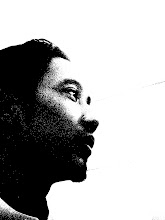
The early interior decoration schemes for villas carried out by the workshop are difficult to classify. The choice of colors and the finish of the design neither correspond with later works, nor do they reflect our general knowledge of color style in the twenties. Despite this sometimes unusual color selection, as in the villas of Gropius and Meyer, the primacy of architecture remains untouched.
Vassily Kandinsky's appointment as master of form focused the interest of the workshop on large-scale mural paintings, independent in composition from the actual wall. Kandinsky's room at the jury-free Art Exhibition in Berlin in 1922 and Oskar Schlemmer's murals in Weimar are seminal pieces within this development.
The late Weimar years and the early Dessau period led to a return to architecture-related decoration. Some designs try to structure rooms with color accents, to create defined areas within one room with the support of color. Walls, floors, and ceilings are dealt with as a single color unit.
Hinnerk Scheper, head of the workshop since 1925, developed a contrasting concept of decoration at the service of architecture. He avoided choosing bright colors and instead used light pastel tones, strengthened by a wide palette of grays. Color differentiation was such that structural architectural elements remained untouched.
His classes were strongly oriented towards craftsmanship. He demanded that a sophisticated color tone scale for oil painting be devised, and laid great importance on the command of different techniques of color shading such as spraying and screening. He considered a founded knowledge of the different components of colors to be just as indispensable as professional know-how in various kinds of rough-casting materials.
Despite this focus on craftsman design, the Bauhaus wallpaper was developed in 1929 as an industrial product. Made for apartments in contemporary housing estates, the patterns were held small and subdued in tone. The wallpaper was so well-adapted to its specific function that it became the most successful Bauhaus product.
Source From :-www.bauhaus.de/english/bauhaus1919/werkstaetten
Vassily Kandinsky's appointment as master of form focused the interest of the workshop on large-scale mural paintings, independent in composition from the actual wall. Kandinsky's room at the jury-free Art Exhibition in Berlin in 1922 and Oskar Schlemmer's murals in Weimar are seminal pieces within this development.
The late Weimar years and the early Dessau period led to a return to architecture-related decoration. Some designs try to structure rooms with color accents, to create defined areas within one room with the support of color. Walls, floors, and ceilings are dealt with as a single color unit.
Hinnerk Scheper, head of the workshop since 1925, developed a contrasting concept of decoration at the service of architecture. He avoided choosing bright colors and instead used light pastel tones, strengthened by a wide palette of grays. Color differentiation was such that structural architectural elements remained untouched.
His classes were strongly oriented towards craftsmanship. He demanded that a sophisticated color tone scale for oil painting be devised, and laid great importance on the command of different techniques of color shading such as spraying and screening. He considered a founded knowledge of the different components of colors to be just as indispensable as professional know-how in various kinds of rough-casting materials.
Despite this focus on craftsman design, the Bauhaus wallpaper was developed in 1929 as an industrial product. Made for apartments in contemporary housing estates, the patterns were held small and subdued in tone. The wallpaper was so well-adapted to its specific function that it became the most successful Bauhaus product.
Source From :-www.bauhaus.de/english/bauhaus1919/werkstaetten

No comments:
Post a Comment